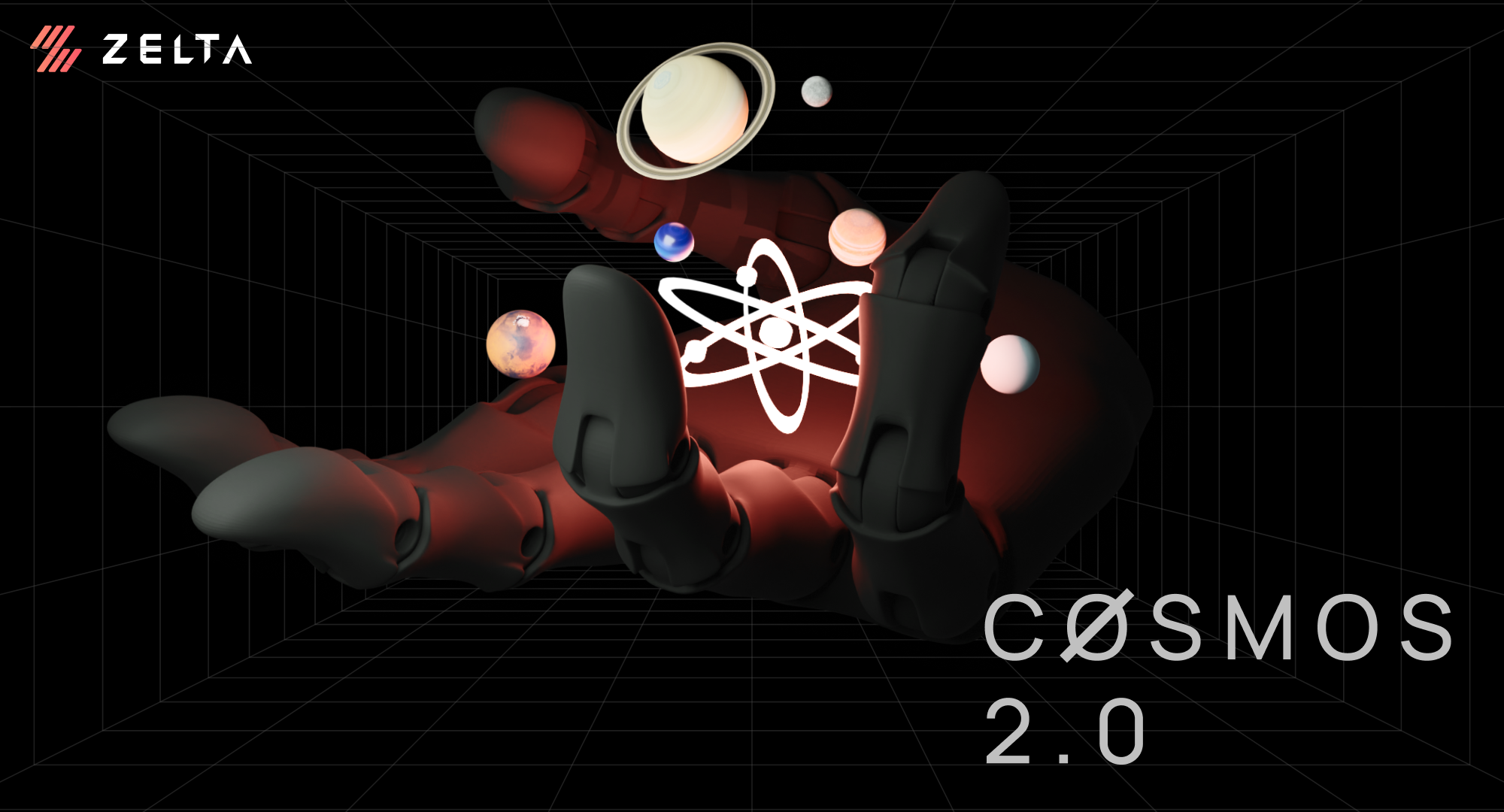

Cosmos 2.0 In A Nutshell: Explained for Beginners by Zelta
Blockchain technology has evolved rapidly in recent years, with innovations continuously reshaping the crypto ecosystem. One platform that has stood out prominently in this evolving landscape is the Cosmos blockchain.
With a commitment to interoperability, scalability, and security, Cosmos has become a force to be reckoned with in the blockchain world.
What is Cosmos (ATOM)?
With its strong foundation, Cosmos has recently taken a significant leap forward with the introduction of Cosmos 2.0. This milestone represents a major upgrade aimed at improving cross-functionality, security, and scalability.
Cosmos is not just another blockchain; it's a visionary project aimed at creating an "internet of blockchains."
At its core, Cosmos fosters an environment where independent blockchains can interact seamlessly while retaining their sovereignty.
To achieve this grand vision, Cosmos relies on three fundamental components: the Cosmos SDK, Inter-Blockchain Communication (IBC) protocol, and Tendermint consensus mechanism.

What is Cosmos SDK?
The Cosmos Software Development Kit (SDK) plays a pivotal role in simplifying blockchain development.
It offers a user-friendly toolkit that empowers developers to create custom blockchains using prebuilt templates and modules.
This approach significantly reduces the complexity of building new blockchains, making Cosmos an attractive choice for developers.
What is Inter-Blockchain Communication (IBC) in ATOM?
Cosmos's secret sauce is the Inter-Blockchain Communication (IBC) protocol.
This universal interoperability module allows different blockchains within the Cosmos network to communicate and transact with one another securely.
Whether it's sending non-native assets or ensuring finality, IBC is the bridge that connects diverse blockchains.
What is Cosmos 2.0?
With its strong foundation, Cosmos has recently taken a significant leap forward with the introduction of Cosmos 2.0.
This milestone represents a major upgrade aimed at improving cross-functionality, security, and scalability.

What is new about Cosmos 2.0?
There are many new things which came along with Cosmos 2.0. Let's go through some of them.
1. Liquid Staking:
Cosmos 2.0 introduces liquid staking, allowing ATOM token holders to stake their tokens while retaining the flexibility to use them for other purposes. This innovation eliminates the opportunity cost associated with traditional staking, making Cosmos even more attractive to a broader range of participants.
2. Interchain Security
Interchain Security removes the need for each protocol to bootstrap its validator set and enables chains to extend their validator sets and staked collateral to secure additional chains on the Cosmos Hub. This not only enhances security but also significantly reduces entry barriers for new projects.
3. Interchain Scheduler
It serves as a secure cross-chain blockspace marketplace and Miner Extractable Value (MEV) solution. This mechanism tokenizes blockspace reservations, ensuring strong execution guarantees. The Interchain Scheduler is a critical component for optimizing transaction flow and value capture in the growing Cosmos ecosystem.
4. Redesign in Cosmos's Tokenomics
The current token design, centered around staking rates, is being revamped to strike a balance between security and liquidity. Over 36 months, token issuance will decrease significantly, fostering a net reduction of 97% in ATOM token issuance. This redesigned approach aims to promote adoption and growth while maintaining security.

5. Reworked Network Fees
Instead of relying on a complex fee structure, this model maintains a whitelist of accepted tokens with corresponding fee minimums. This simplifies fee determination and enhances overall efficiency. Moreover, other applications within the ecosystem will have the autonomy to create their fee structures, allowing for a diverse and flexible approach.
Conclusion:
Cosmos Blockchain is at the forefront of blockchain innovation, offering an interconnected ecosystem that bridges the gap between diverse blockchains.
With Cosmos 2.0, Cosmos has taken significant strides towards achieving its vision of an "internet of blockchains." Liquid staking, Interchain Security, Interchain Scheduler, tokenomics redesign, and a more efficient fee model are all contributing to Cosmos's evolution.
The journey continues, and Cosmos is poised to shape the future of decentralized applications, blockchain interoperability, and secure blockchain growth. Stay tuned for more exciting developments in the Cosmos universe.
(Click here to learn about CS:GO's Stolen NFT Scandal)
Note:
